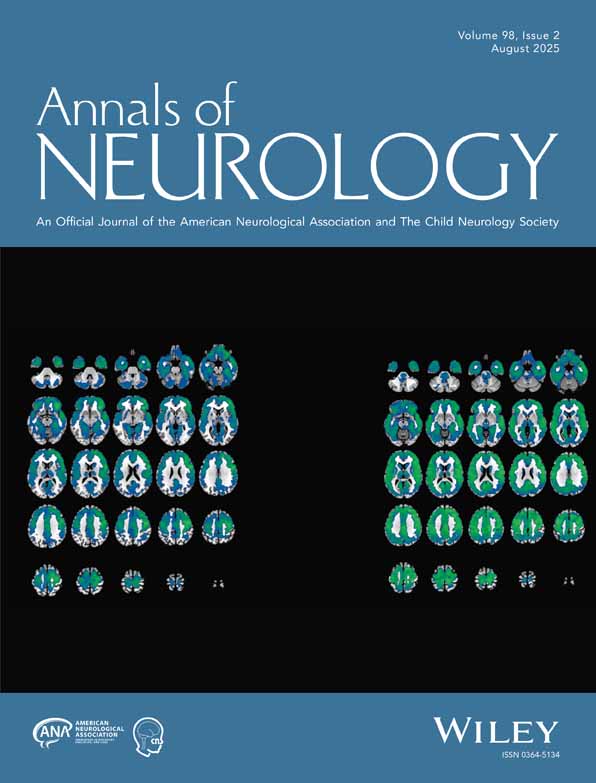Paraneoplastic anti–N-methyl-D-aspartate receptor encephalitis associated with ovarian teratoma
Abstract
Objective
To report the autoantigens of a new category of treatment-responsive paraneoplastic encephalitis.
Methods
Analysis of clinical features, neuropathological findings, tumors, and serum/cerebrospinal fluid antibodies using rat tissue, neuronal cultures, and HEK293 cells expressing subunits of the N-methyl-D-aspartate receptor (NMDAR).
Results
Twelve women (14–44 years) developed prominent psychiatric symptoms, amnesia, seizures, frequent dyskinesias, autonomic dysfunction, and decreased level of consciousness often requiring ventilatory support. All had serum/cerebrospinal fluid antibodies that predominantly immunolabeled the neuropil of hippocampus/forebrain, in particular the cell surface of hippocampal neurons, and reacted with NR2B (and to a lesser extent NR2A) subunits of the NMDAR. NR2B binds glutamate and forms heteromers (NR1/NR2B or NR1/NR2A/NR2B) that are preferentially expressed in the adult hippocampus/forebrain. Expression of functional heteromers (not single subunits) was required for antibody binding. Eleven patients had teratoma of the ovary (six mature) and one a mature teratoma in the mediastinum; five of five tumors examined contained nervous tissue that strongly expressed NR2 subunits and reacted with patients' antibodies. Tumor resection and immunotherapy resulted in improvement or full recovery of eight of nine patients (paralleled by decreased antibody titers); two of three patients without tumor resection died of neurological deterioration. Autopsies showed extensive microgliosis, rare T-cell infiltrates, and neuronal degeneration predominantly involving, but not restricted to, the hippocampus.
Interpretation
Antibodies to NR2B- and NR2A-containing heteromers of the NMDAR associate with a severe but treatment-responsive encephalitis. Our findings provide a diagnostic test and suggest a model of autoimmune NMDAR-related encephalitis with broad implications for other immune-mediated disorders of memory, behavior, and cognition. Ann Neurol 2007;61:25–36




